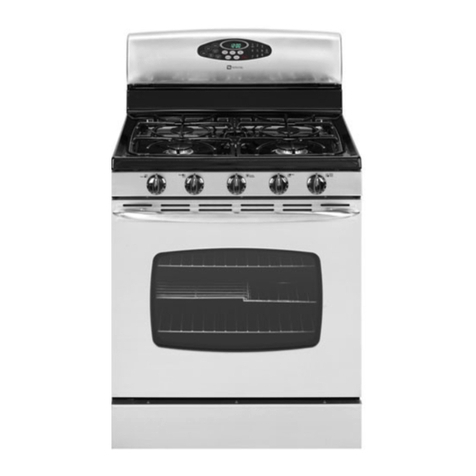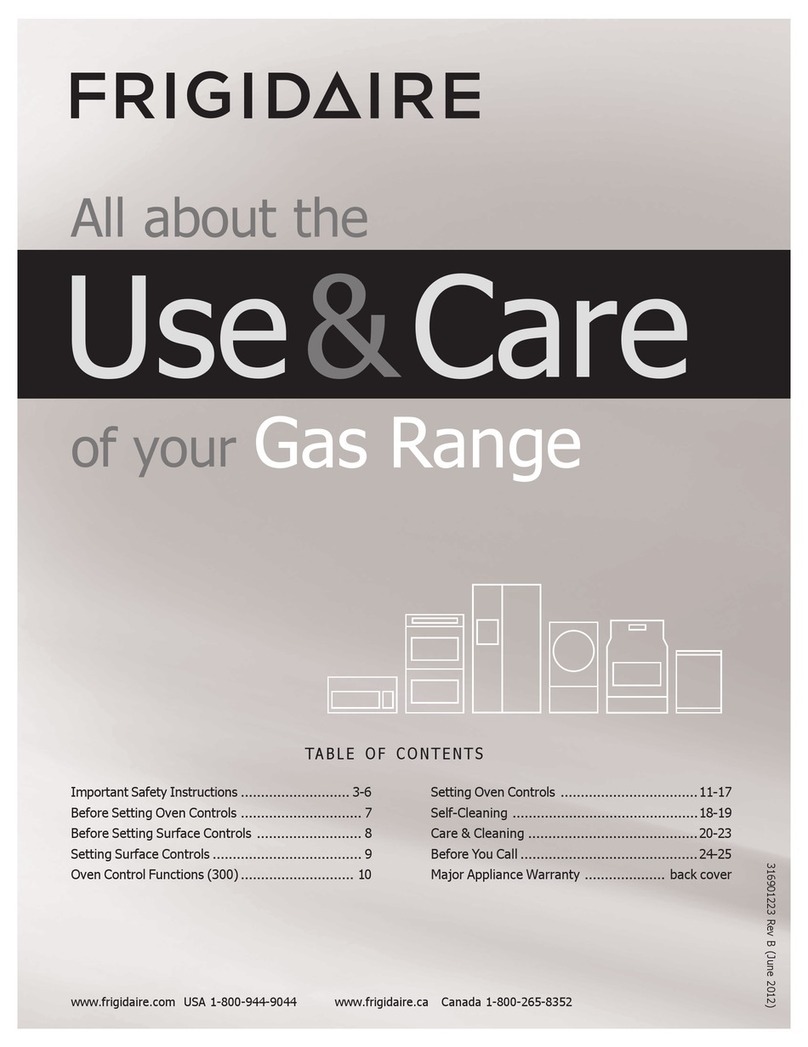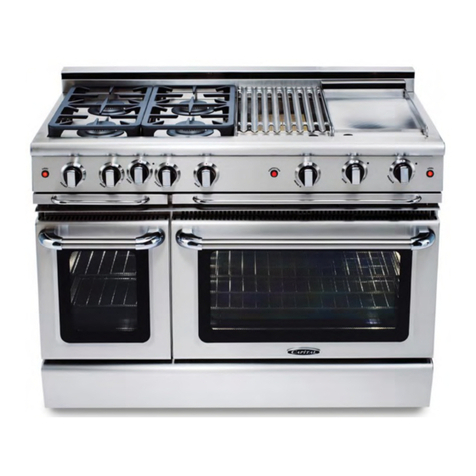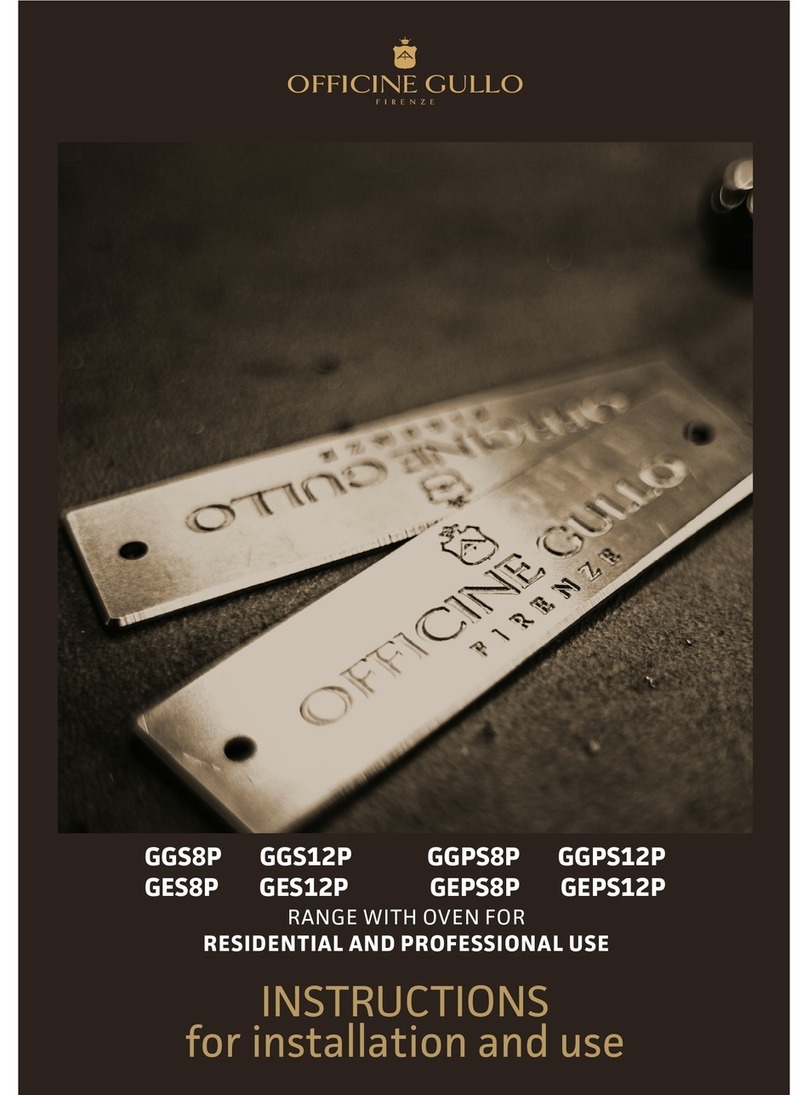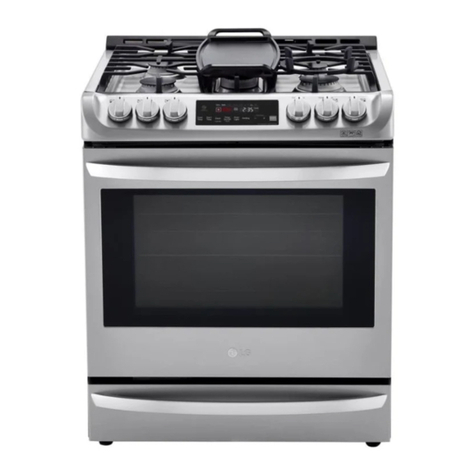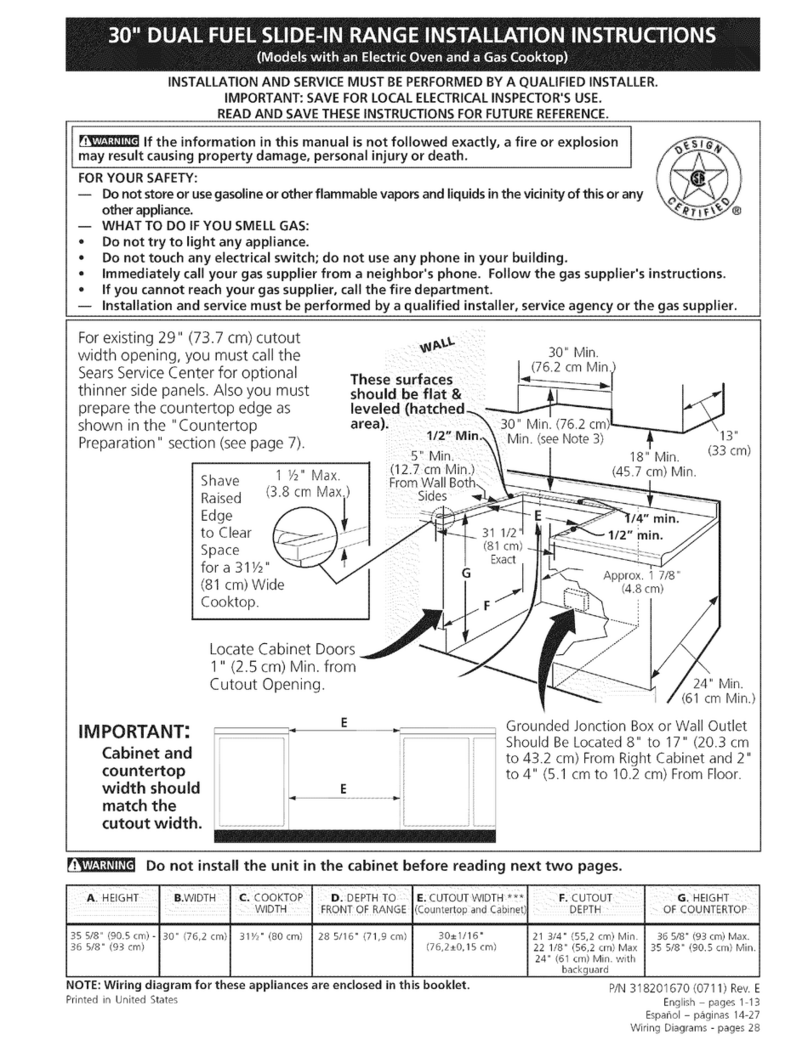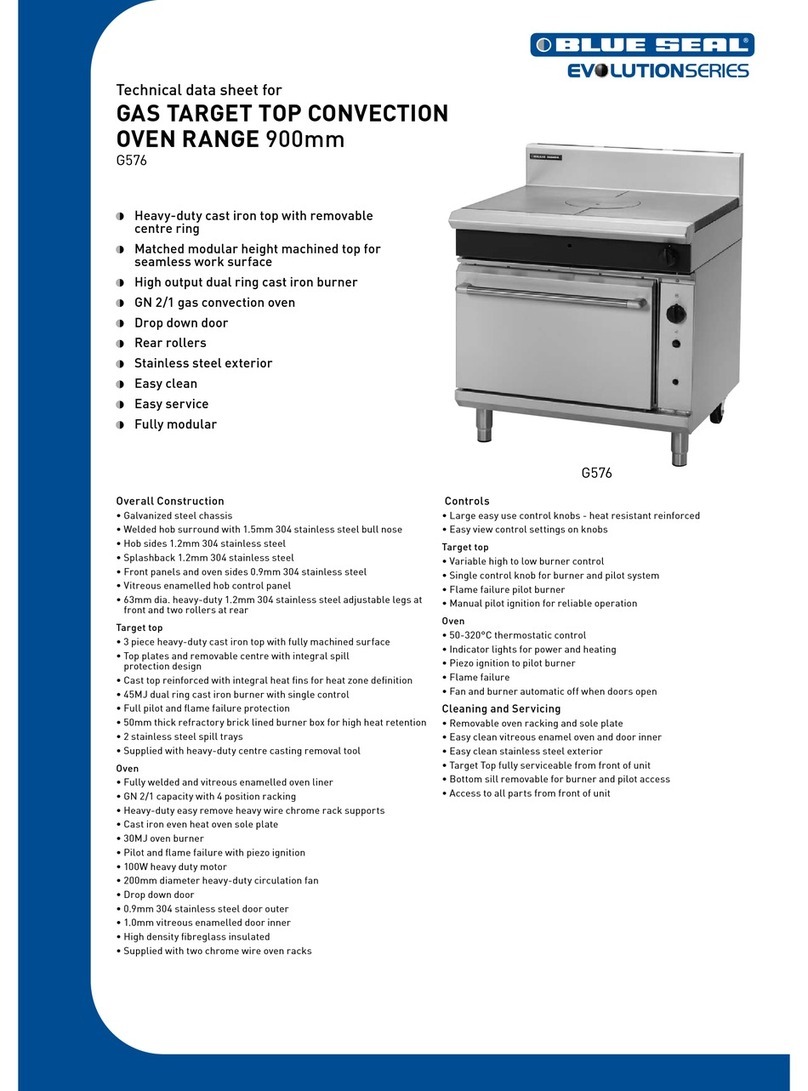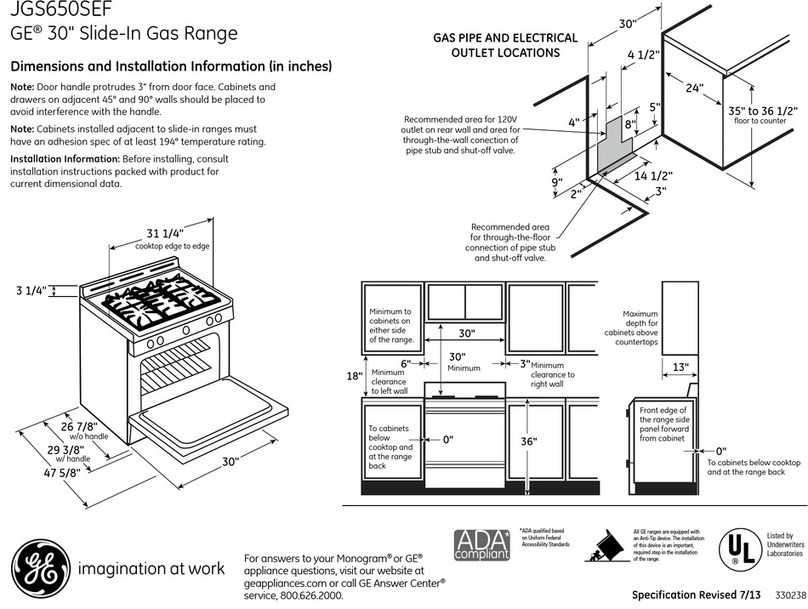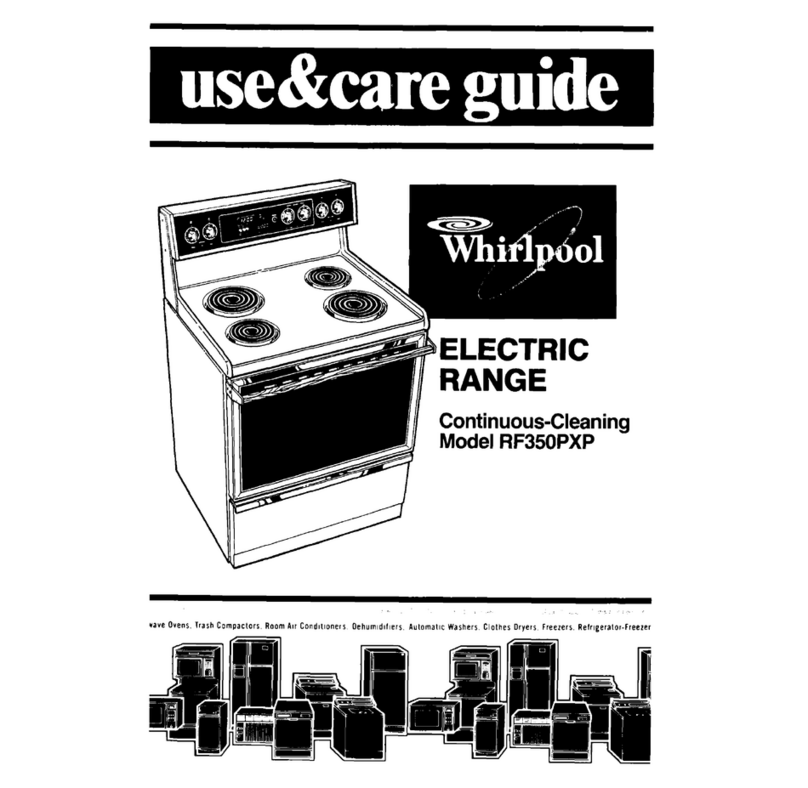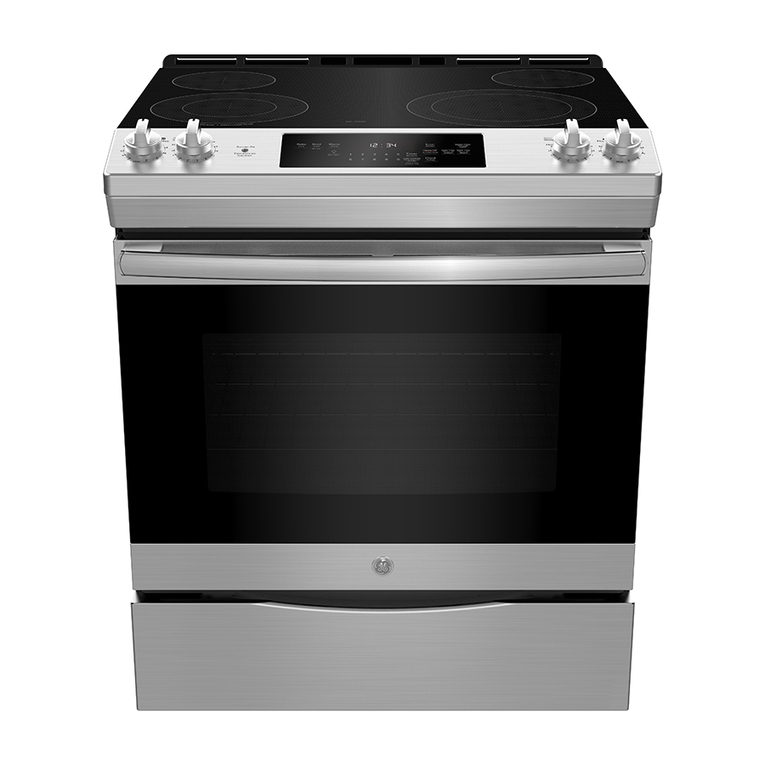
Important Safety Information
5
WARNINGS
• Do not store or use gasoline, liquid propane cylinder
or other flammable vapors and liquids in the vicinity of
this or any other appliance.
• Gas leaks cannot always be detected by smell.
• Gas suppliers recommend that you use a gas
detector approved by UL or CSA. For more
information, contact your gas supplier.
• If a gas leak is detected, follow the “What to do if you
smell gas” instructions on the previous page.
• Installation and service must be performed by a
qualified installer, servicer or the gas supplier. Ask
your dealer to recommend a qualified technician and
an authorized repair service. Know how to shut off
gas supply at the meter and disconnect the electrical
power to the appliance at the circuit breaker or fuse
box in case of an emergency. Have the installer show
you the location of the appliance gas shut-off valve
and how to shut it off if necessary.
• Do not repair or replace any part of the appliance
unless specifically recommended in this manual. All
other servicing should be done only by a qualified
technician. This may reduce the risk of personal
injury and damage to the appliance.
• Proper Installation: The appliance, when installed,
must be electrically grounded in accordance with
local codes or, in the absence of local codes, with the
National Electrical Code, ANSI/NFPA 70. In Canada,
the appliance must be electrically grounded in
accordance with Canadian Electrical Code. Be sure
the appliance is properly installed and grounded by a
qualified technician
• Disconnect power before servicing.
• Never modify or alter the construction of the
appliance by removing panels, wire covers or any
other part of the product.
• Injuries may result from the misuse of appliance
doors such as stepping, leaning, or sitting on the
doors.
• Overhead range hoods, which operate by blowing a
downward air flow on to the appliance, shall not be
used in conjunction with gas appliances other than
when the hood and appliance have been designed,
tested and listed by an independent test laboratory
for use in combination with each other.
• If appliance is located near a window, NEVER hang
long curtains or paper blinds on that window. They
could blow over the surface burners and ignite,
causing a fire hazard.
• Ensure that the room is well-ventilated by keeping the
air intakes open and in good working order or by
installing an extractor hood with discharge pipe. If the
appliance is used intensively for a long time the
effectiveness of the ventilation will have to be increased,
for example by opening a window or increasing the
power of an electric extractor fan.
• Flammable materials should not be stored on the
appliance or near surface units. This includes paper,
plastic and cloth items, such as cookbooks, plasticware
and towels, as well as flammable liquids. Do not store
explosives, such as aerosol cans, on or near the
appliance. Flammable materials may explode and result
in fire or property damage.
• Maintenance: Keep appliance area clear and free from
combustible materials, gasoline, and other flammable
vapors and liquids.
• Storage in or on the appliance: Flammable materials
should not be stored in an oven or near surface units.
IN THE STATE OF MASSACHUSETTS, THE FOLLOWING
INSTALLATION INSTRUCTIONS APPLY:
• Installations and repairs must be performed by a
qualified or licensed contractor, plumber, or gas fitter
qualified or licensed by the State of Massachusetts.
• If using a ball valve, it shall be a T-handle type.
• A flexible gas connector, when used, must not exceed
three feet.
STATE OF CALIFORNIA PROPOSITION 65 WARNINGS:
• The California Safe Drinking Water and
ToxicEnforcement Act require the Governor of California
to publish a list of substances known to the state to
cause birth defects or other reproductive harm and
requires businesses to warn customers of potential
exposure to such substances.
• Gas appliances can cause minor exposure to three of
these substances, namely, carbon monoxide,
formaldehyde and soot, caused primarily by the
incomplete combustion of natural gas or LP fuels.
Adequately adjusted burners, indicated by a bluish
rather than yellow flame, will minimize incomplete
combustion. Exposure to these substances can be
minimized by entering with an open window or by using
a ventilation fan or hood.
